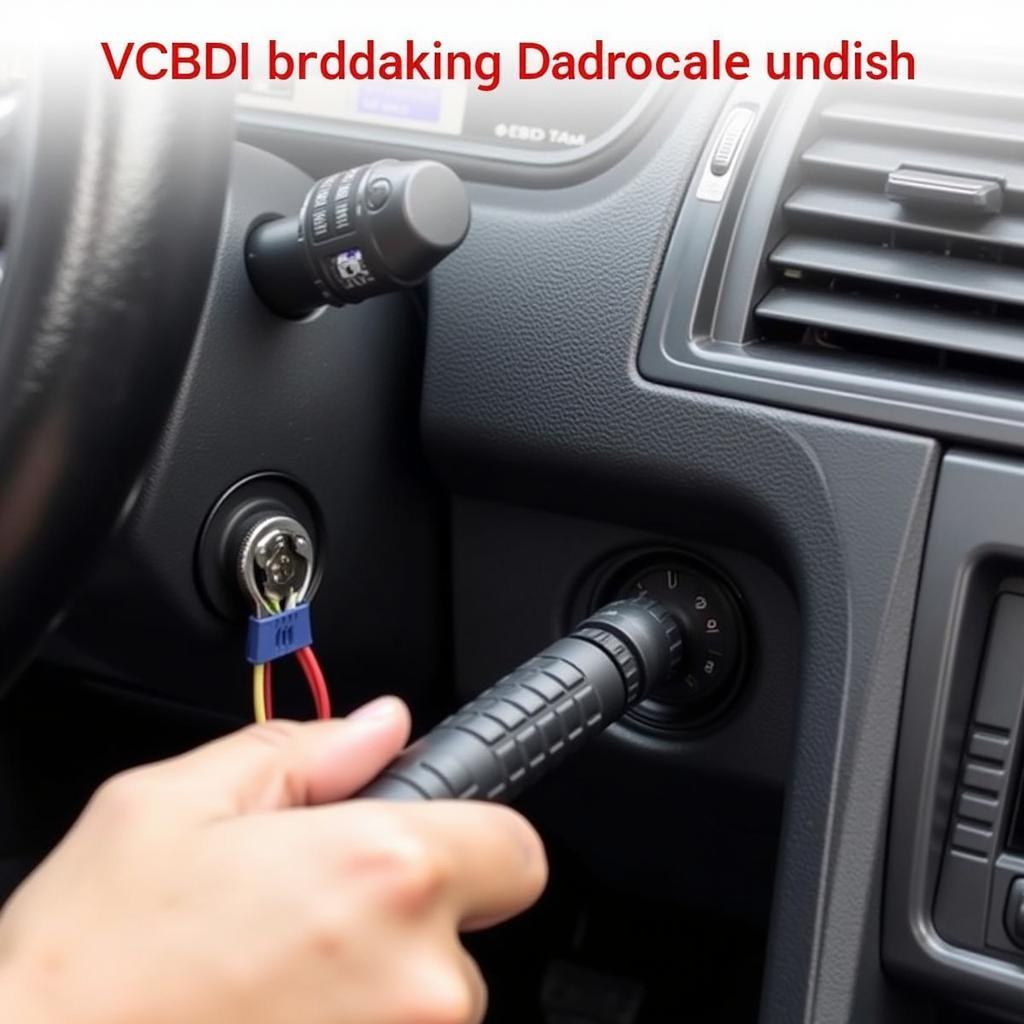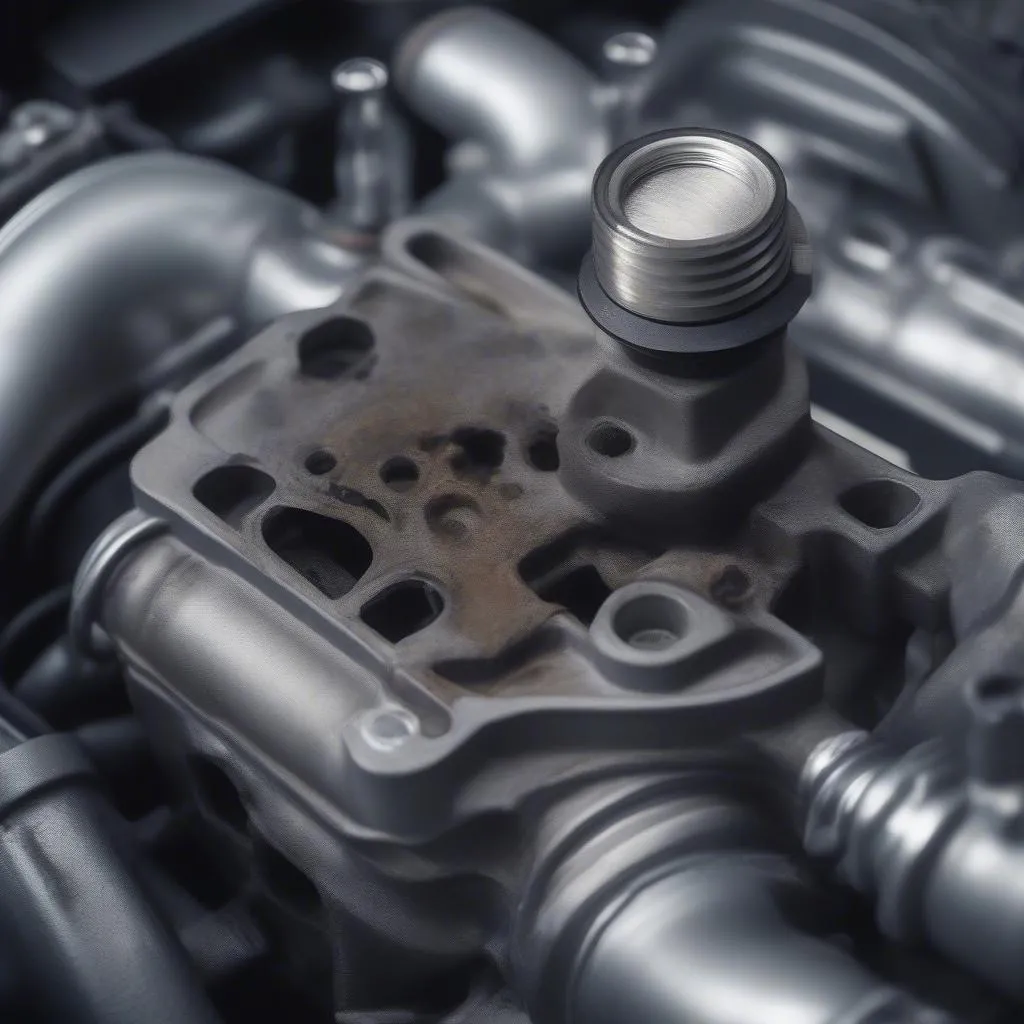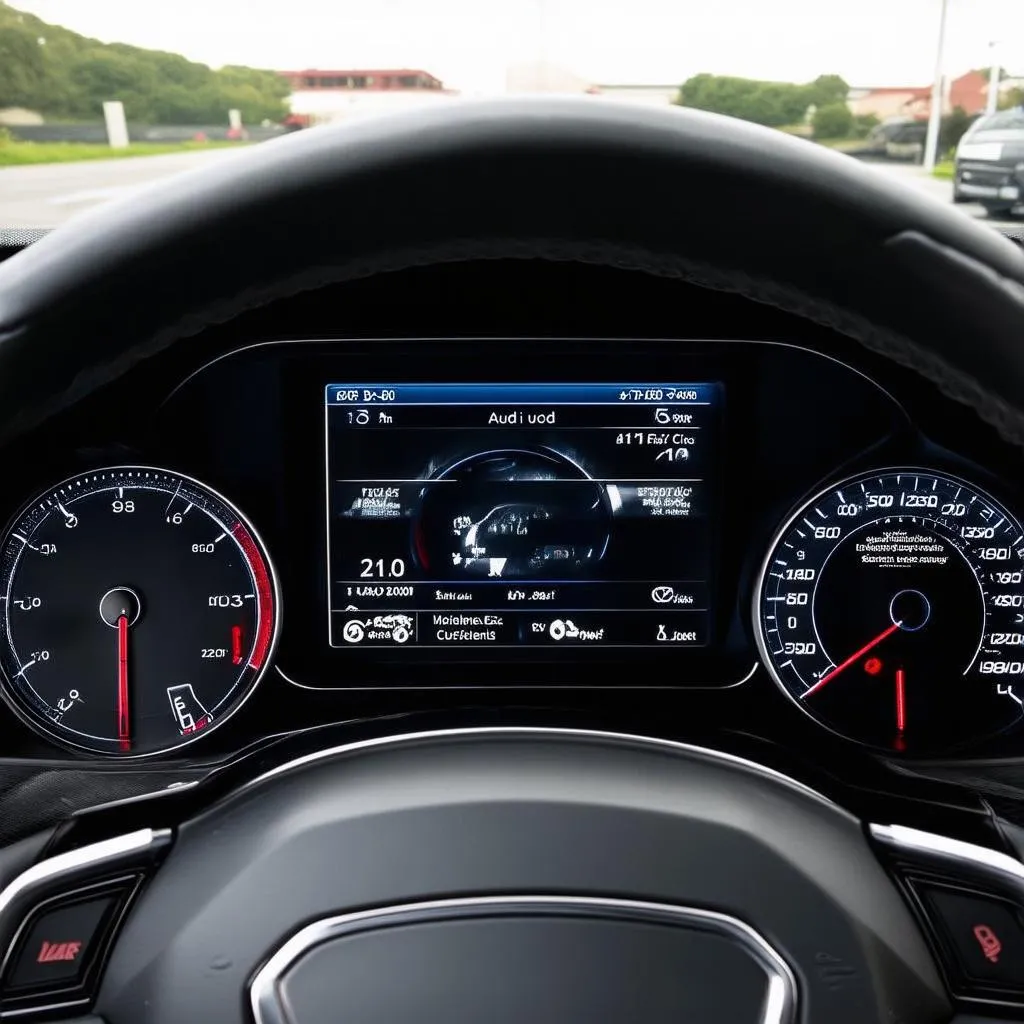The VCDS Soundaktor, a sound enhancer found in many Volkswagen, Audi, Seat, and Skoda vehicles, can be a source of both enjoyment and frustration. This article will delve into the intricacies of using a VCDS (VAG-COM Diagnostic System) to control, tune, or even disable the Soundaktor, empowering you to personalize your driving experience.
Controlling the Soundaktor through VCDS opens up a world of possibilities, from subtle enhancements to complete deactivation. Understanding how the system works is crucial for effective tuning. The Soundaktor is an electromechanical device located near the firewall that generates sound based on engine speed and load. This sound is then channeled into the cabin, adding a sportier note to the engine’s natural acoustics. However, some drivers find this artificial enhancement intrusive and prefer a quieter ride. Others may wish to fine-tune the Soundaktor to better suit their preferences. Whether you want to tweak the settings, diagnose a malfunction, or completely shut it off, VCDS offers the tools you need. Similar to soundaktor vcds, understanding the underlying principles is key to maximizing its potential.
VCDS Soundaktor: Tuning for a Personalized Driving Experience
With VCDS, adjusting the Soundaktor’s intensity is straightforward. By accessing the correct control module and adjusting the specified adaptation channels, you can precisely control the level of sound enhancement. This allows you to find the sweet spot between a subtle boost and a more pronounced growl. Experimentation is key, and VCDS makes it easy to revert to the factory settings if needed.
Troubleshooting Common Soundaktor Issues with VCDS
Diagnosing Soundaktor problems often involves checking for fault codes within the relevant control module using VCDS. Common issues include a completely silent Soundaktor, unusual buzzing or rattling noises, or intermittent operation. VCDS allows you to pinpoint the source of the problem, whether it’s a faulty Soundaktor unit, a wiring issue, or a software glitch. Once the problem is identified, appropriate repairs can be made. Just as with vcds tuning, proper diagnosis is the first step towards a solution.
Completely Disabling the Soundaktor via VCDS
For those who prefer the pure, unadulterated sound of their engine, VCDS allows for complete deactivation of the Soundaktor. This involves adjusting a specific adaptation channel within the engine control module. The process is typically quick and reversible, allowing you to easily restore the Soundaktor’s functionality if desired. This is a popular modification for drivers seeking a more refined and quieter driving experience.
Why Choose VCDS for Soundaktor Control?
VCDS provides a user-friendly interface and detailed access to the vehicle’s control modules, making it the ideal tool for managing the Soundaktor. Its diagnostic capabilities allow for precise troubleshooting, and its adaptation functionalities empower users to customize their driving experience. Using VCDS for Soundaktor control ensures accurate adjustments and minimizes the risk of unintended modifications. Similar to the functionality provided for mk7 golf r vcds, VCDS grants significant control over various vehicle systems.
How to Access and Adjust the Soundaktor Settings in VCDS
Accessing the Soundaktor settings requires a genuine VCDS cable and software. After connecting to the vehicle’s OBD-II port, select the correct control module, usually labeled “Engine.” Navigate to the “Adaptation” section, and locate the specific channel for the Soundaktor. The channel number may vary depending on the vehicle model and year. You can then adjust the value within this channel to control the Soundaktor’s intensity or disable it altogether. For specific instructions related to your vehicle, consult online forums or VCDS documentation. This process parallels adjusting settings for tiguan vcds tweaks and other vehicle models.
 Connecting VCDS to Car's OBD-II Port
Connecting VCDS to Car's OBD-II Port
In conclusion, VCDS offers unparalleled control over the Soundaktor, allowing for precise tuning, diagnostics, and even complete deactivation. Whether you seek a sportier engine note, a quieter cabin, or simply want to troubleshoot a problem, VCDS provides the tools and information necessary to achieve your goals. By understanding the underlying principles and utilizing the power of VCDS, you can truly personalize your driving experience. Consider also exploring 09 a4 vcds tweaks for other customization options.
FAQ
-
What is a VCDS Soundaktor?
A VCDS Soundaktor is an electromechanical device used to enhance engine sound in some Volkswagen Group vehicles. VCDS allows users to control its settings. -
Can I completely disable the Soundaktor with VCDS?
Yes, you can completely disable the Soundaktor through a specific adaptation channel within the engine control module using VCDS. -
What are common Soundaktor issues?
Common Soundaktor problems include no sound, unusual noises, or intermittent operation, often diagnosable with VCDS. -
Why should I use VCDS for Soundaktor control?
VCDS offers a user-friendly interface, precise control, and detailed diagnostic capabilities for managing the Soundaktor. -
Where can I find instructions for my specific vehicle?
Consult online forums or VCDS documentation for specific instructions related to your vehicle model and year. -
How do I connect VCDS to my car?
Connect the VCDS cable to your car’s OBD-II port, typically located under the dashboard. -
Is it safe to adjust Soundaktor settings with VCDS?
Yes, adjusting Soundaktor settings with VCDS is safe as long as you follow proper procedures and instructions.
Need more help with VCDS tweaks and customizations? Explore our articles on soundaktor vcds, vcds tuning, and specific model tweaks for Golf R, Tiguan, and Audi A4.
For any assistance, contact us via Whatsapp: +1 (641) 206-8880, Email: CARDIAGTECH[email protected] or visit us at 276 Reock St, City of Orange, NJ 07050, United States. We offer 24/7 customer support.


